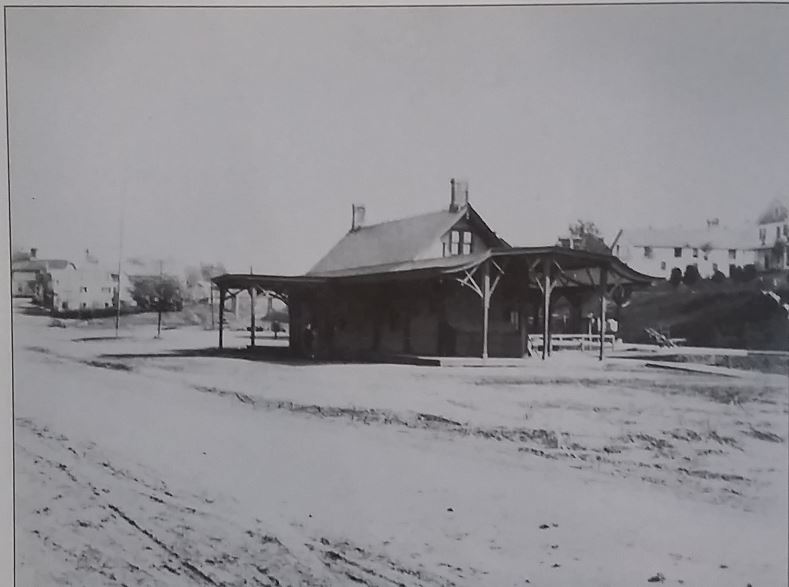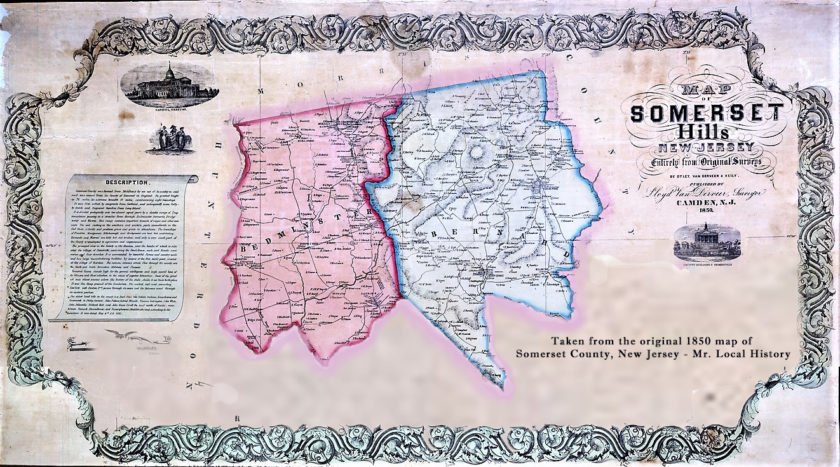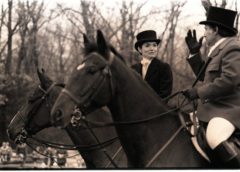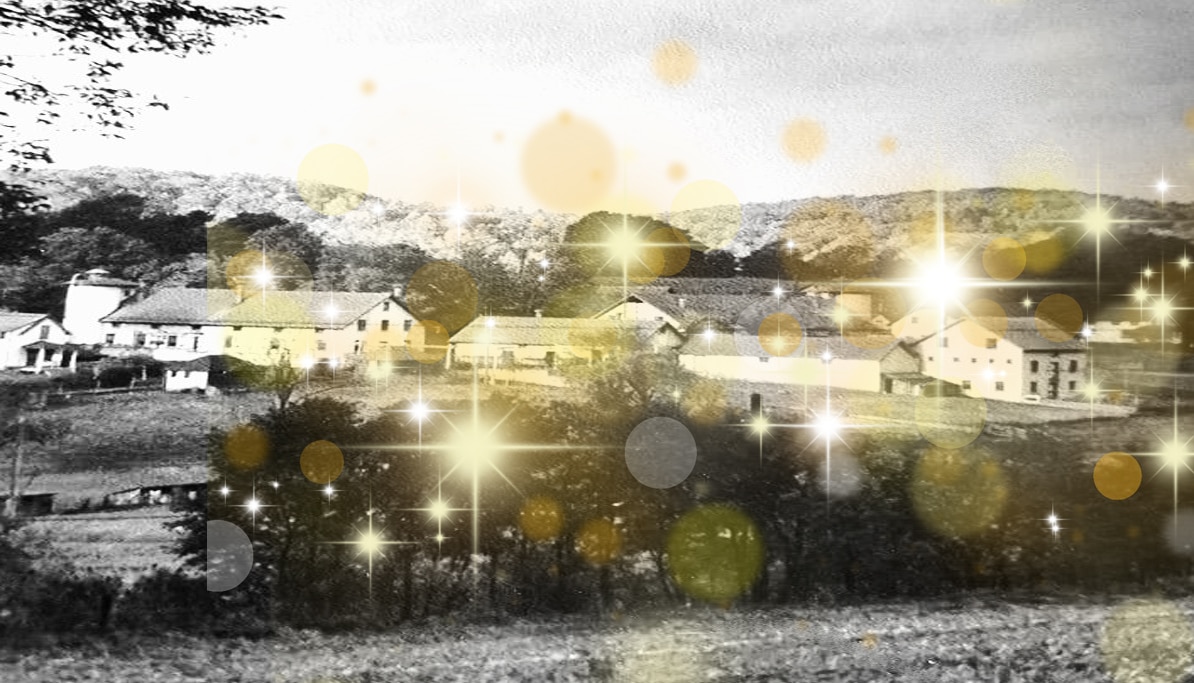As a former township historian in this area, I learned that everyone has a point of view on what changed the area over the years. No matter who you talk to, you typically hear that the area is nothing like it used to be. But what it used to be depends on how far back you look.
Looking back to the 1700s in the Somerset Hills, we recognize a few things. First, the Somerset Hills townships are tucked behind the Watchung Mountains in a small, tight-knit area hiding from the urban juggernauts of Newark and New York City, a fact General Washington leveraged to secure the great country we live in today. If you look at the population trends in the area since the Revolutionary War, you will find a whole bunch of historic events that have reshaped the area we live in today. Let’s take a look and see what we found. And if you were born and raised in the area, we hope you’ll post a comment at the end of the piece and keep us honest. 🙂
What is the Data Saying
As a data analyst, it’s always fun to spot data shifts (breaking trends) and try to tie them back to the events that disrupted the regular growth trend. Often, there are anomalies, like the bump in Bernards Township in 1840. But what’s striking is that each town in the Somerset Hills stayed relatively consistent, except for one: Bernards Township.
The first trend is obvious – transportation created flight to the open space of the Somerset Hills. The creation of the Federal Highway System, which began in 1950, opened the door to the area’s post-1950 growth. Another spike is the creation of “The Hills” in Bedminster between 1980-1990. The data show that Bedminster jumped from 2,400 to over 7,000, tripling its population in one decade, after a period of relative stability over the previous two centuries. But there’s a whole host of known events that altered the state of our population, our communities, our transportation, and our local businesses.
Events That Changed Somerset Hills’ Populations
As part of our research, we identified several key events that changed not only the desire to live in the area but also how we would find the Somerset Hills. It started with religion, then transportation, land availability, employment, and finally, affordable living.
- Formation of the Presbyterian Church 1717 (Basking Ridge)
- Railroad connection to Basking Ridge – January 29, 1872
- Railroad connection to Bernardsville – January 29, 1872
- Railroad connection to Gladstone – October 10, 1890
- Charles Pfizer purchases the Essex Hunt Club and relocates in 1892 (Bernardsville)
- The Somerset Hills Inn opens – 1903 (Bernardsville)

- The Tax Act on the Landed Gentry of 1913 (Bernardsville)
- Airport opened in Basking Ridge – The Somerset Hills Airport delivers airmail to the town starting in 1930
- The United States Veterans Administration and Lyons Train Station – 1931 (Bernards Twp)
- Federal Aid Highway Act, June 29, 1956 (Somerset Hills)
- Urban flight to suburbia – 1950s/1960s- (Bernards Township and Bernardsville)
- AT&T National Headquarters 1975 (Basking Ridge)
- The New Jersey Mt. Laurel Doctrine – (Bedminster & Bernards Twp)
- The Hills Development – 1970s (Bedminster & Bernards Twp)
- Affordable housing developments in Basking Ridge – 1980s
Bernards Township Population Boom Breaking Regional Trends
As historians, we’re going to take on this challenge to understand the trends and dig into local history archives to find out. There has to be a reason.


As we started digging in the Bernards Township history records, we found a few things:
- The Somerset Hills Airport opened in Basking Ridge in 1932.
- Basking Ridge opened its own high school in 1962.
- The Basking Ridge exit to Mt. Airy Road off Route 287 opened on July 29, 1966.
- The Basking Ridge Exit 36 off Route 78 opened on July 29, 1966.
- The Liberty Corner Exit 32 off Route 78 to Mt. Airy Road officially opened on July 29, 1966.
- The Route 78 extension that had closed the Watchung Mountains pass opened in 1986. The final plan had I-78 running through 3.5 miles of the Watchung Reservation, requiring the acquisition of 66 acres from Union County. In return for ending its opposition to I-78, the state gave Union County 70 acres of nearby state-owned land, plus $3.6 million to construct new equestrian facilities and a Boy Scout camp.
- AT&T opened its headquarters in Basking Ridge in November 1975.
Between 1960 and 1970, Bernards Township experienced its largest growth in history, rising almost 48% from just over 9,000 to over 13,000 residents.
Post AT&T Boom
While the other townships in the Somerset Hills stabilized, Bernards Township bucked the trend and continued a period of monumental growth. While you can’t subscribe to any one event, a few previous events are now having a full effect on the township. You see, the highways were open, the Bernards Township school system was starting to get great reviews, the open space of the 25-mile township was as inviting as a flight to suburbia, and AT&T had just settled into the township. Between 1980 and 1990, Bernards Township saw another huge population spike, rising almost 33% from 12,990 to over 17,000.
Then, from 1990 to 2000, Bernards Township saw yet another massive population spike, rising almost 43%, adding over 7,000 new residents to the population of 24,575.
Bedminster/ Bernards Population Divergence

When you look back at history and dig deep enough, you can find clues that help you understand why things happen. While we’re not relying on scientific facts, we did recognize a few things. Bedminster was a farming community alongside Bernards Township throughout the 1700s. Then, in the late 1800s, a few historic landowners grabbed large tracts of land that took a long time to break up. While Bernards Township got a railroad, it didn’t have the landed gentry hoarding land.

Worship also played an important part in the growth in Bernards Township. Bernards Township offered a wide array of worship options for its residents, which led to additional growth.
But while the two townships have a very similar footprint (approx. 25 square miles), Bernards Township became growth-friendly, while Bedminster didn’t. So, for the first time, Bernards Township fought the government policies that forced Bedminster to accept 6,000 new residents for The Hills Development, and landed in a totally different place, with a completely different vision for development. You can also blame the horses. The equestrian community in Bedminster still drives the decision to allow very limited development. While the property boundaries have shrunken, they still far outweigh Bernards Township in size.
Conclusion

Our opinion? We believe wealthy landowners prevented the property from being split up or developed, forever differentiating Bedminster, Far Hills, Bernardsville, and Peapack/Gladstone from Bernards Township. But it was the Lyons VA Medical Center, opened in 1930, that changed Bernards Township and the area forever.
What do you think?














I think you on right on with your growth analysis differential between Bedminster and Bernards Townships. My prognosis for Bedminster is that we’ll see growth as the large estates break up. I hope I am totally wrong.
Your Events Listing should include AT&T Long Lines opening in Bedminster (I think 1977).
Finally, I appreciate your history stories of the Somerset Hills.